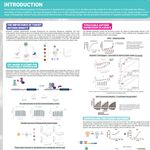
-
Phillip Page, PhD
Field Application ScientistBIOGRAPHY -
Mary Murphy, PhD
Applications ScientistBIOGRAPHY
DATE: March 14, 2017
TIME: 8:00AM PST, 11:00AM EST
Surface Plasmon Resonance (SPR) is a widely-used label-free technique to characterize a variety of molecular interactions. SPR is an optical phenomenon that is sensitive to changes in the dielectric properties of the medium close to a metal surface. Specifically, the resonance condition is affected by changes in refractive index occurring up to 300 nm above the metal surface (Au) and thus by the material absorbed onto the metal film. Therefore, the SPR signal is a measure of the total mass concentration at the gold sensor chip surface.
Typically, a mobile molecule (analyte) is injected across an immobilized binding partner (ligand) and as the analyte binds, this mass accumulation on the sensor surface leads to an increase in refractive index, and the result is plotted as response versus time. SPR is commonly utilized by researchers to determine association/dissociation rates, affinities and thermodynamics of biomolecular interactions.
Traditionally, the interactions under study with SPR include those occurring with and between the major classes of biological macromolecules along with those involving small molecules and drugs. These classic experiments have been primarily carried with just purified samples. Reichert’s SPR systems implement a very robust fluidics arrangement that can accommodate a wide variety of sample compositions including crude samples such as lysates, whole cells and serum. In addition, Reichert’s systems are housed in an open architecture that easily allows coupling to other analytical techniques and instruments. Along with excelling at traditional biomolecular interactions, Reichert’s systems pave the way for new avenues of investigation involving crude samples and whole cells along with the ability to couple SPR to other techniques. This presentation will focus on the SPR technique and provide examples of unique applications with cells along with the possibility of interfacing SPR with other analytical methods.
Please update your information
Certificate of Attendance
DOWNLOAD CERTIFICATE





